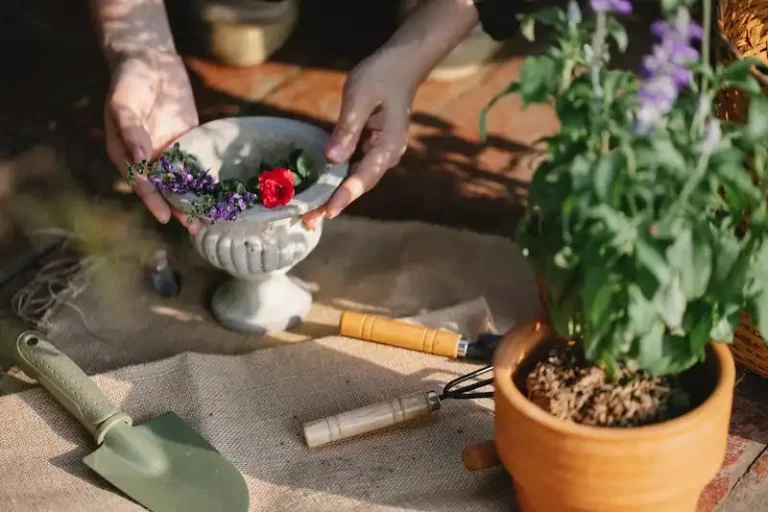Calla lilies, also known as zantedeschia, are a group of herbaceous plants that belong to the Araceae family. These stunning flowers are native to southern Africa and come in a wide array of colors, including shades of white, yellow, pink, and purple. Known for their elegant and trumpet-shaped blooms, calla lilies make a great addition to any garden or landscape.
Before planting calla lilies, it’s important to understand their specific requirements. These plants thrive in well-draining soil and require a sunny spot in the garden. They can tolerate partial shade but will not do well in areas with full shade. Calla lilies are also high-maintenance when it comes to water as they prefer consistently moist soil throughout the growing season. However, they can tolerate short periods of drought without any major issues.
Calla lilies are also great for attracting pollinators to your garden. Their trumpet-shaped flowers serve as a landing pad for bees and butterflies, making them essential for the health of your garden ecosystem. These insects help in the pollination process, ensuring the survival and reproduction of the plant.
One of the great things about calla lilies is their long bloom times. Depending on the variety, these flowers can bloom from late spring to early fall, providing a splash of color to your garden for months. They’re also relatively resistant to diseases and pests, although fungal infections and deer can sometimes be a problem. Providing a border around your calla lilies or planting them in a location away from deer can help prevent these issues.
When it comes to planting calla lilies, timing is everything. These plants are considered tender perennials and are typically grown as annuals in colder regions. It’s best to plant calla lily bulbs in early spring, after the danger of frost has passed and the soil has warmed up. However, they can also be planted as early as late winter if you have a protected planting location or are willing to take extra precautions.
There are a few ways to plant calla lilies, but the most common method is to dig a hole that is three times the height of the bulb. Place the bulb in the hole with the pointed side facing up, cover it with soil, and water well. If you live in an area with cold winters, you can store the bulbs in a cool and dry place during the winter months and replant them in the spring.
Whether you’re an experienced gardener or just starting out, calla lilies are a great addition to any garden. With their stunning blooms, ease of care, and wide range of colors, these flowers are sure to make a statement. So, why wait? Start planting calla lilies and enjoy their beauty all season long!
7 Ways To Garden With Calla Lilies
Calla lilies, also known as Zantedeschia, are amazing plants that can add a touch of elegance and beauty to any garden. Here are 7 ways to incorporate these stunning flowers into your gardening:
- Border Magic: Plant calla lilies along the edges of your garden beds for a spectacular border. Their longfield of colorful blooms will surely catch the eye of any passerby.
- Colorful Combinations: Consider growing calla lilies alongside other plants with complementary colors. Pair them with yellow annuals for an eye-catching contrast, or add some lavender foliage for a softer touch.
- Group Plantings: Create stunning groupings of calla lilies by planting them together in clusters. This will make a bold statement and can be especially effective when massed in a large garden bed.
- Late-Summer Blooms: Calla lilies are known for their late-summer blooms, making them a great option for adding color to your garden when many other plants have finished flowering.
- Kids’ Garden: Calla lilies are not only beautiful, but they’re also relatively easy to grow, making them a perfect choice for a kids’ garden. Teach your little ones about plants and watch their excitement as the calla lilies bloom.
- Special Occasions: Calla lilies have long been considered a special flower for occasions such as weddings and anniversaries. Plant them in a dedicated section of your garden to enjoy their beauty year after year.
- Unique Vase Fillers: Cut calla lilies make a stunning addition to any vase arrangement. Their long, elegant stems and unique trumpet-shaped blooms will bring a touch of elegance to any room.
When growing calla lilies, there are a few things you should keep in mind. These plants thrive best in well-drained soil and prefer full sun or partial shade. They’re also relatively frost hardy, making them a great choice for gardens in colder climates. However, they won’t tolerate temperatures below freezing, so be sure to provide adequate protection or bring them indoors if you live in an area with late-frost seasons.
While calla lilies are generally easy to grow, they may encounter some common problems such as diseases or drainage issues. Be sure to monitor their growth and take prompt action if you notice any odd symptoms or signs of distress. Additionally, it’s worth mentioning that calla lilies are toxic if ingested, so be cautious if you have pets or small children around.
In conclusion, calla lilies are a versatile and beautiful addition to any garden. Whether you plant them in borders, groupings, or use them as cut flowers, their amazing blooms and lush foliage will surely enhance the overall aesthetic of your outdoor space.
1 Plant A Cutting Garden With Callas
If you’re looking to add a burst of color to your garden, consider planting calla lilies. These gorgeous plants are commonly found in cutting gardens, where you can easily snip a few stems to bring indoors. Calla lilies are easy to care for and can live for years, making them a perfect addition to your garden.
Calla lilies are not only beautiful, but they also attract butterflies and are less likely to be eaten by deer. They come in a variety of colors, from white and yellow to red and pink, so you can create stunning groupings of these low-maintenance plants in your garden.
When planting calla lilies, choose a well-drained area with plenty of sunlight. These plants prefer to be in full sun, although they can tolerate some shade. Make sure to water them regularly, especially during the beginning stages of growth.
One thing to keep in mind when planting calla lilies is that they are annuals in some states. If you live in a colder state, you may need to replant them each year. However, in warmer climates, calla lilies can be perennials and will come back year after year.
Calla lilies are also perfect for containers, so if you don’t have space in your garden, you can still enjoy these beautiful flowers. Just make sure to use well-drained soil and add mulch to prevent weeds and keep the soil moist.
Another reason to consider adding calla lilies to your garden is that they’re relatively easy to care for. They’re not prone to many diseases or viruses, and they don’t require a lot of attention. Just make sure to keep an eye out for wilt or other problems, and if you notice any issues, take appropriate steps to address them.
It’s also worth noting that calla lilies are toxic to humans and pets if ingested. Make sure to keep them out of reach of children and pets, as they can cause inflammation if they come into contact with the mouth or skin.
Overall, calla lilies are a beautiful and versatile addition to any garden. Whether you plant them in the ground or in containers, these long-lasting flowers are sure to add a pop of color and elegance to your outdoor space.
So, if you’re looking for a plant that’s easy to grow, attracts butterflies, and adds a touch of sophistication to your garden, definitely consider planting calla lilies.
2 Plant Calla Lilies In Groupings of 3-5 Odd Numbers are Best
When it comes to planting calla lilies in your garden or landscape, grouping them in odd numbers is a great way to make a high impact. Planting calla lilies in groupings of 3-5 odd numbers not only looks visually appealing, but it also offers some practical benefits.
Why Groupings of Odd Numbers?
Odd-numbered groupings of calla lilies create an interesting and balanced look in your garden. These groupings draw attention and can serve as focal points in your outdoor space. Plus, odd numbers tend to have a more natural and organic feel, making them visually pleasing to the eye.
What Are the Benefits of Grouping Calla Lilies?
Grouping calla lilies together provides several advantages for successful growth:
- Improved Pollination: Grouping calla lilies in odd numbers attracts pollinators, such as butterflies, bees, and other insects. The abundance of flowers in a group helps to increase the chances of successful pollination.
- Enhanced Flower Display: When calla lilies are clustered together, their beautiful blooms create a stunning floral display. Grouping them in odd numbers ensures a dense and visually captivating flower arrangement.
- Heightened Visual Impact: Planting calla lilies in groupings of 3-5 odd numbers can add drama and visual interest to your garden or landscape. The vibrant colors and unique shapes of calla lily flowers draw attention and create a focal point.
- Reduced Weeds: Growing calla lilies in grouped plantings can help suppress weed growth. The dense foliage of the plants shades the soil, preventing weed seeds from germinating.
How to Plant Calla Lilies in Groupings
Here’s how you should go about planting calla lilies in groupings:
- Choose a Suitable Location: Calla lilies prefer full sun to partial shade. Select a spot in your garden or landscape that receives at least 6 hours of direct sunlight each day.
- Prepare the Soil: Calla lilies thrive in well-drained soil. Ensure good drainage by amending the soil with organic matter, such as compost or peat moss.
- Plant the Bulbs: Dig holes that are 4-6 inches deep and space them approximately 12-18 inches apart. Place the bulbs in the holes, pointed end up, and cover them with soil.
- Water Regularly: After planting, water the bulbs thoroughly to settle the soil. Throughout the growing season, keep the soil consistently moist but not waterlogged. Avoid overwatering, as calla lilies can rot in soggy soil.
- Provide Care and Maintenance: Calla lilies are generally low-maintenance plants. Remove any faded flowers and yellowing foliage to encourage continued blooming. Apply a balanced fertilizer once a month during the growing season for optimal plant health.
By following these planting and care instructions, you can enjoy a beautiful display of calla lilies in your garden or landscape. Remember to consider odd-numbered groupings for a more visually appealing and successful growth.




